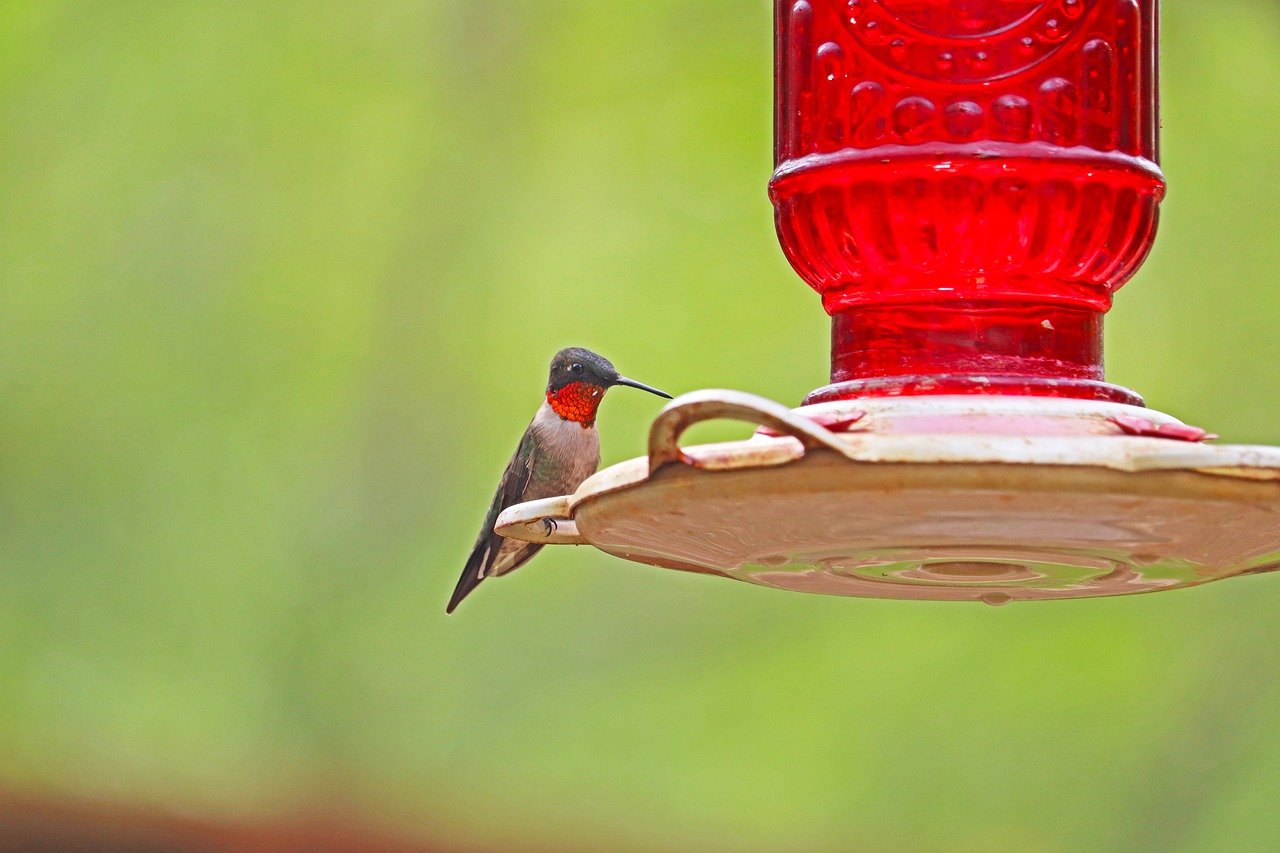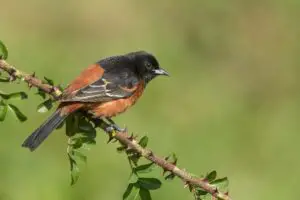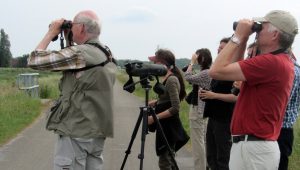Feeding the smallest bird in Texas never gets old. The more hummingbirds that show up, the more entertaining they seem to be.
If you want to put your feeder up just before the first hummer arrives, and keep it up until the last one has left, you’ll have to know their migration timing for your part of the state.
Hummingbird Season in Texas
Hummingbirds arrive in Texas early to mid March, and depart in October. Hang your feeders around March 1st and keep them up until November 1st to be safe. Hummingbirds in the southern half of the state may stay through winter, in which case feeders can hang year-round.
Use the table below to perfectly time hanging your feeder according to where you live.
| City | Hang Feeder | Take Down | Winter Hummingbirds? |
| Houston | March 1st | October 20th | Possible |
| San Antonio | March 7th | November 1st | Possible |
| Austin | March 10th | October 15th | Possible |
| Dallas | April 1st | October 10th | No |
| McAllen | All Year! | – | Yes |
| El Paso | April 1st | October 20th | Yes |
| Lubbock | April 1st | October 15th | No |
Which Hummingbird Feeder to Use
A quick note on feeding these little birds, we recommend a more flat circular feeder like this one (Amazon link).
It’s just as effective at attracting hummingbirds as any other feeder, but easier to clean quickly.
During hot summer months you should be cleaning feeders and replacing the sugar water every two to three days, so faster cleaning becomes a big deal. Especially if you have multiple feeders.
Avoid the color yellow on feeders as it tends to attract more bees.
Hummingbird Season in Houston
Hummingbird season in Houston is March 1st through October 20th. Overwintering hummingbirds are uncommon but possible, so leaving your feeder up year-round is optional.
Ruby-throated Hummingbirds are the expected species here, while Black-chinned Hummingbirds are possible during migration periods, but very uncommon.
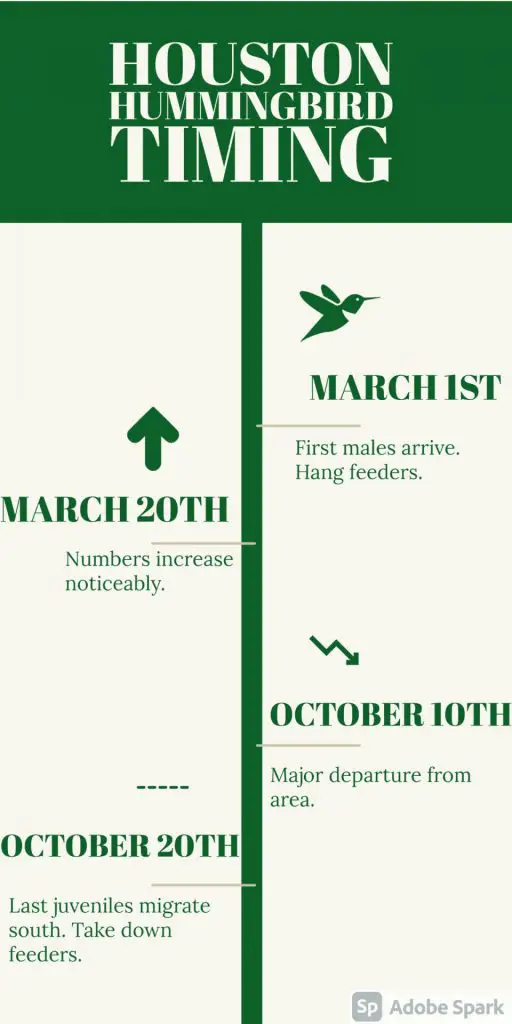
March 1st will catch nearly all early arrivals, and the first big wave of males will show up around March 20th to 25th. By the second week of April the females have joined, and overall numbers are at the seasonal high.
Middle of October will bring a sharp drop in hummingbird numbers. They may become difficult to find after October 10th, and most will have left the area by the 20th. Males are the first to migrate south, mostly in September. Females and juveniles leave next, and are mostly what you’ll see in October.
By the last week of October all hummingbirds have left the Houston area, except for a few lingering individuals.
Hummingbird Season in San Antonio
Hummingbird season in San Antonio is March 7th through November 1st. Low numbers of hummingbirds are also present during winter months, so keeping your feeder up year-round is optional.
Black-chinned Hummingbird is the expected species here, but Ruby-throated Hummingbird is also present during migration. Ruby-throats will have a brief peak in mid-April, and then show more consistent numbers during September.
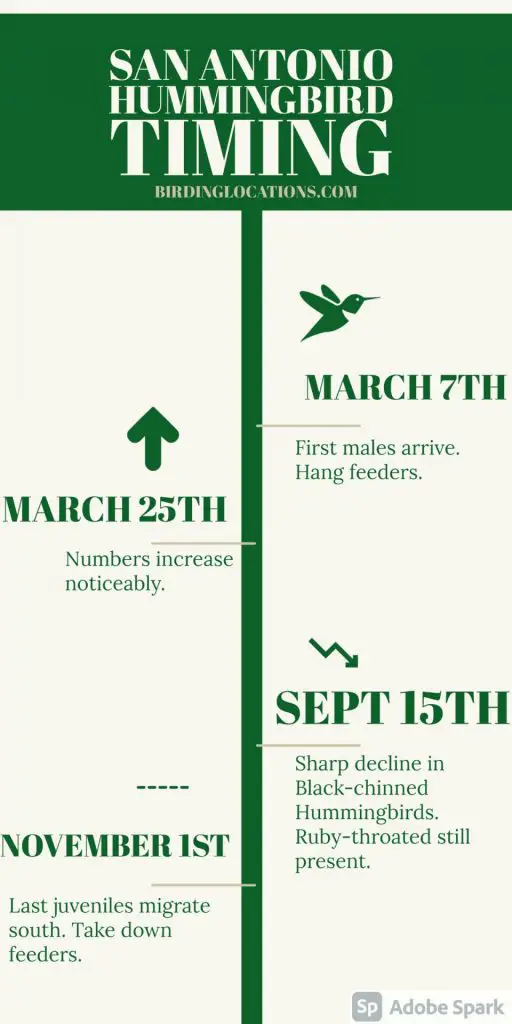
Expect a big surge in overall hummingbird numbers during the last week of March. During the fall, Black-chinned Hummingbird numbers will decline sharply after the first week of September, while Ruby-throated Hummingbirds will remain until late October.
Rufous Hummingbirds are present in the San Antonio area in low numbers from August all the way through March. Keep your feeder up during the colder months with fresh sugar water and you may attract one to your yard.
Hummingbird Season in Austin
Hummingbird season in Austin is March 10th through October 15th.
Austin gets strong numbers of both Black-chinned Hummingbirds and Ruby-throated Hummingbirds during migration periods, although only Black-chinneds are present during summer.
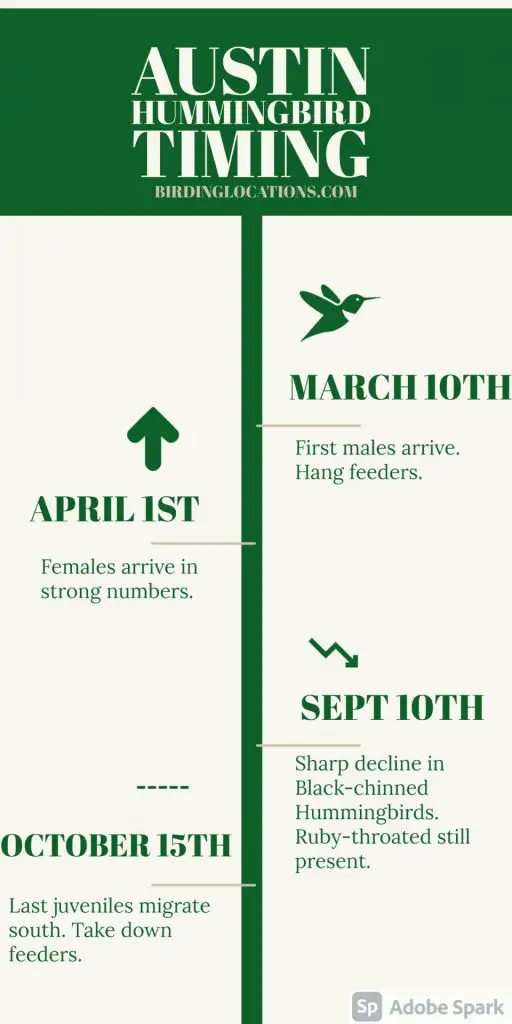
During fall migration, most Black-chinned Hummingbirds have left the area by September 20th, but small numbers regularly linger into early October. Ruby-throated Hummingbirds continue passing through until mid to late October.
Rufous Hummingbirds are uncommon but regular winter residents, especially to the west of Austin in the Hill Country. If you live here, consider leaving your feeder out during the winter and see if you’re lucky enough to get a surprise visitor.
Hummingbird Season in Dallas
Hummingbird Season in Dallas is April 1st through October 10th. Expect a slight surge in late April, and a major departure beginning in early October.
North central Texas residents may see both Ruby-throated and Black-chinned Hummingbirds. Black-chinned is more common west of Ft. Worth, while those east of Dallas may only see Ruby-throated.
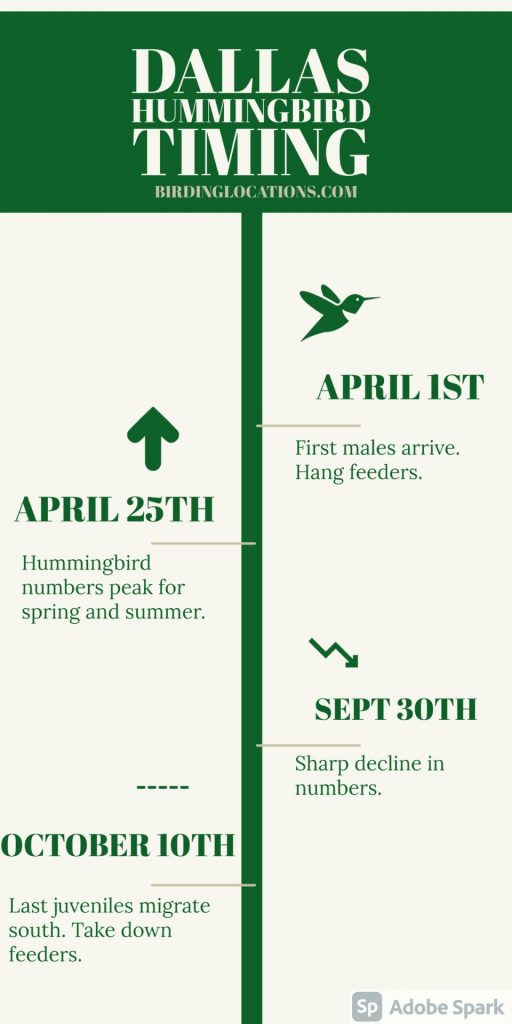
Black-chinned Hummingbirds begin leaving the area first, mostly in August, followed by the Ruby-throats.
Most Ruby-throated Hummingbirds have left by September 20th, but a few individuals may linger through the end of the month or even into the first week of October. It’s up to you if you want to keep your feeder up that long, but most Dallas area residents won’t see action at their feeders past late September.
Hummingbird Season in McAllen
The Valley in far south Texas is a special place when it comes to hummingbirds because they’re always here!
Hummingbird season in the south Texas valley is ongoing year-round. Residents can expect a surge in numbers during April as large numbers of Ruby-throated and Black-chinned Hummingbirds pass through, and again during September. Feeders should be hung year-round.
The year-round resident here is the Buff-bellied Hummingbird. Both Ruby-throated and Black-chinned Hummingbirds are also present during all months, except June and July.
Hummingbird Season in El Paso
El Paso is treated to a greater diversity of hummingbirds than other Texas cities due to its relatively extreme western location. There’s always hummingbirds around, but there’s still a seasonality to the species.
Arrival of Black-chinned Hummingbirds mark the beginning of spring in El Paso. The first individuals arrive around March 25th, and numbers surge the first week of April.
Late summer and fall is a very dynamic season, with multiple species entering and leaving the region.
- Anna’s Hummingbirds may appear as early as July, and stay through March.
- Broad-tailed Hummingbird numbers surge late July through September, although present year-round
- Rufous Hummingbirds appear in a huge wave late July and August, and dwindle significantly during October.
- Calliope Hummingbirds can be seen late July through September.
- Black-chinned Hummingbirds are usually gone by late October.
During winter the most common species are Anna’s, Broad-tailed, and Rufous Hummingbird.
Hummingbird Season in Lubbock
Hummingbird season in Lubbock and the Texas Panhandle is April 1st through October 20th. Expect a surge of Black-chinned Hummingbirds during mid-April, and a sudden departure in early October.
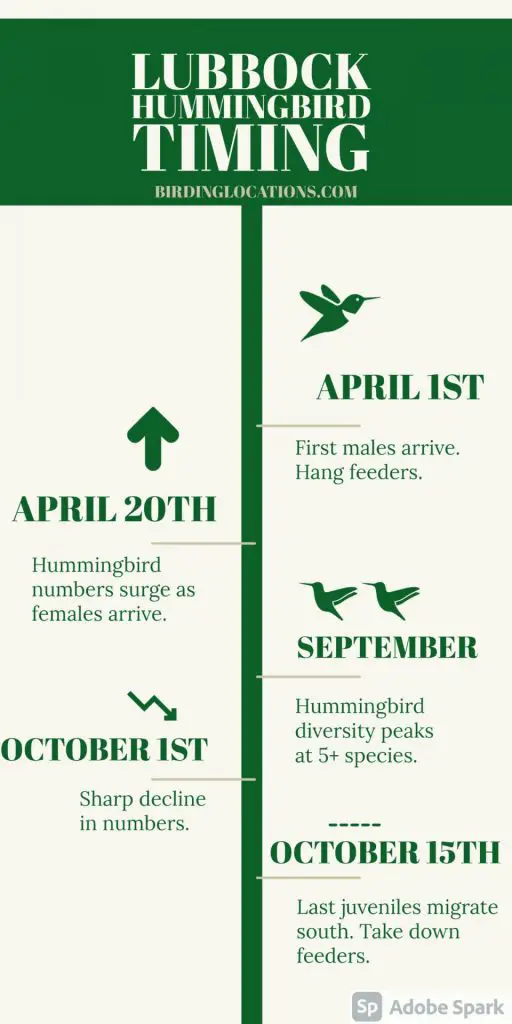
Black-chinned Hummingbirds arrive in force during the second and third weeks of April in the Texas panhandle. This is when most people will see their first hummingbird of the year at their feeders.
Occasionally some hummingbirds will show up during the first week of April, so have your feeders up on the first of the month, just in case you get an eager early arrival.
Species diversity is high during September. It’s possible to see Rufous, Broat-tailed, Ruby-throated, and even Calliope Hummingbird during the southbound fall peak.
Typically the last hummingbirds will have left the area by mid-October, although you may stop seeing hummingbirds at your feeder before then.
Hummingbirds Love Native Flowers
If you absolutely love hummingbirds and can’t get enough of them, planting native flowering plants around you yard and house is a fantastic way to attract them.
See our guide on the best plants for attracting hummingbirds in Texas.

